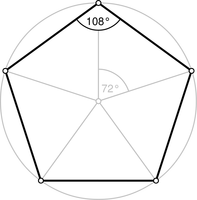|
The Sacred Significance of "108" The number "108" holds profound significance across various spiritual traditions. In Hinduism and Buddhism, it represents a path of balance with 108 virtues to nurture and 108 defilements to shun. This sense of equilibrium extends to their malas (or rosaries), which feature 108 beads. In Islamic traditions, "108" is sometimes invoked in place of God's name. Even in tai chi, a practice rooted in fluid motion and balance, there are 108 movements. The recurring presence of this number across diverse spiritual practices suggests its importance goes beyond mere coincidence. 108 and Growth The number 108 has intriguing ties to the cosmos: the average distance from the Sun and Moon to Earth is 108 times their respective diameters. Beyond this celestial connection, the natural world showcases 108 in the growth of a nautilus shell. As the nautilus matures, each new chamber of its shell expands to be 1.08 times larger than the previous one, crafting a mesmerizing logarithmic spiral on the shell's exterior. In the BBC Two documentary "The Code," Professor Marcus du Sautoy from the University of Oxford unveils the elegant spiral shell of the nautilus, which grows at a constant rate of 1.08. He delves into how spirals and the wonders of math manifest across nature. 108 and The Number 5 The number 108 is related to the number 5. The clue is related to the angle of the Pentagon, being 108˚. 108 and The Fibonacci Sequence The number 108 has a profound significance when looked through the lens of decimal parity, an ancient numerical system used by cultures like Egypt and India to discern the essence of numbers. Decimal parity simplifies numbers to single digits. Take 361: 3 + 6 + 1 = 10, and further, 1 + 0 = 1. Thus, 361's decimal parity is 1. Consider the Fibonacci Sequence's first 24 numbers: 0, 1, 1, 2, 3, 5, 8, 13, 21, 34, 55, 89, 144, 233, 377, 610, 987, 1597, 2584, 4181, 6765, 10946, 17711, 28657. Applying decimal parity to this sequence yields a recurring pattern of 24 digits: 0, 1, 1, 2, 3, 5, 8, 4, 3, 7, 1, 8, 9, 8, 8, 7, 6, 4, 1, 5, 6, 2, 8, 1. The sum? A familiar 108. Intriguingly, this pattern mirrors the 1.08 growth constant the nautilus adopts for its spiral shell. The connection between nature's designs and ancient numerical systems is truly fascinating.
24 Comments
|


 RSS Feed
RSS Feed